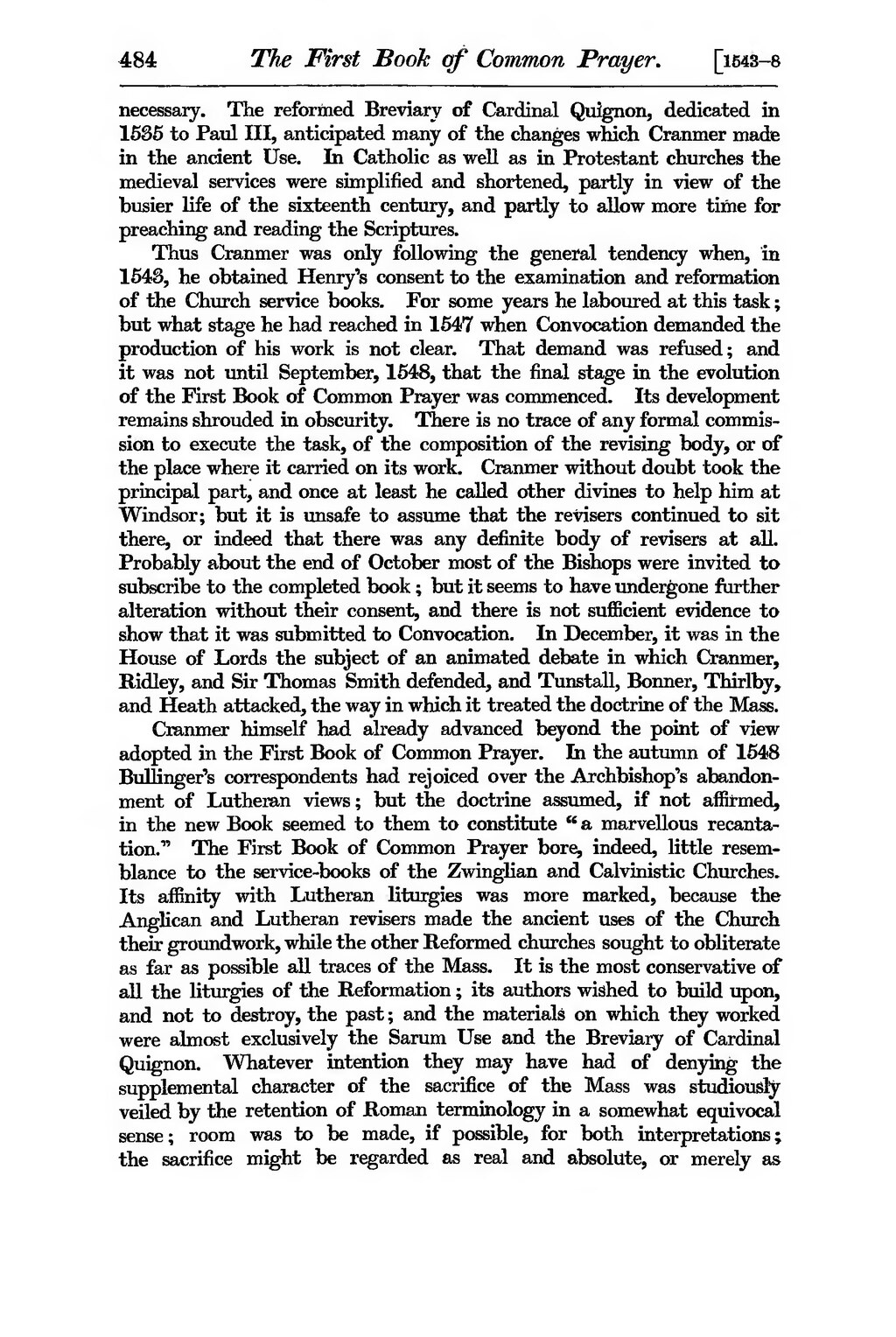necessary. The reformed Breviary of Cardinal Quignon, dedicated in 1535 to Paul III, anticipated many of the changes which Cranmer made in the ancient Use. In Catholic as well as in Protestant churches the medieval services were simplified and shortened, partly in view of the busier life of the sixteenth century, and partly to allow more time for preaching and reading the Scriptures.
Thus Cranmer was only following the general tendency when, in 1543, he obtained Henry's consent to the examination and reformation of the Church service books. For some years he laboured at this task; but what stage he had reached in 1547 when Convocation demanded the production of his work is not clear. That demand was refused; and it was not until September, 1548, that the final stage in the evolution of the First Book of Common Prayer was commenced. Its development remains shrouded in obscurity. There is no trace of any formal commission to execute the task, of the composition of the revising body, or of the place where it carried on its work. Cranmer without doubt took the principal part, and once at least he called other divines to help him at Windsor; but it is unsafe to assume that the revisers continued to sit there, or indeed that there was any definite body of revisers at all. Probably about the end of October most of the Bishops were invited to subscribe to the completed book; but it seems to have undergone further alteration without their consent, and there is not sufficient evidence to show that it was submitted to Convocation. In December, it was in the House of Lords the subject of an animated debate in which Cranmer, Ridley, and Sir Thomas Smith defended, and Tunstall, Bonner, Thirlby, and Heath attacked, the way in which it treated the doctrine of the Mass.
Cranmer himself had already advanced beyond the point of view adopted in the First Book of Common Prayer. In the autumn of 1548 Bullinger's correspondents had rejoiced over the Archbishop's abandonment of Lutheran views; but the doctrine assumed, if not affirmed, in the new Book seemed to them to constitute " a marvellous recantation." The First Book of Common Prayer bore, indeed, little resemblance to the service-books of the Zwinglian and Calvinistic Churches. Its affinity with Lutheran liturgies was more marked, because the Anglican and Lutheran revisers made the ancient uses of the Church their groundwork, while the other Reformed churches sought to obliterate as far as possible all traces of the Mass. It is the most conservative of all the liturgies of the Reformation; its authors wished to build upon, and not to destroy, the past; and the materials on which they worked were almost exclusively the Sarum Use and the Breviary of Cardinal Quignon. Whatever intention they may have had of denying the supplemental character of the sacrifice of the Mass was studiously veiled by the retention of Roman terminology in a somewhat equivocal sense; room was to be made, if possible, for both interpretations; the sacrifice might be regarded as real and absolute, or merely as
